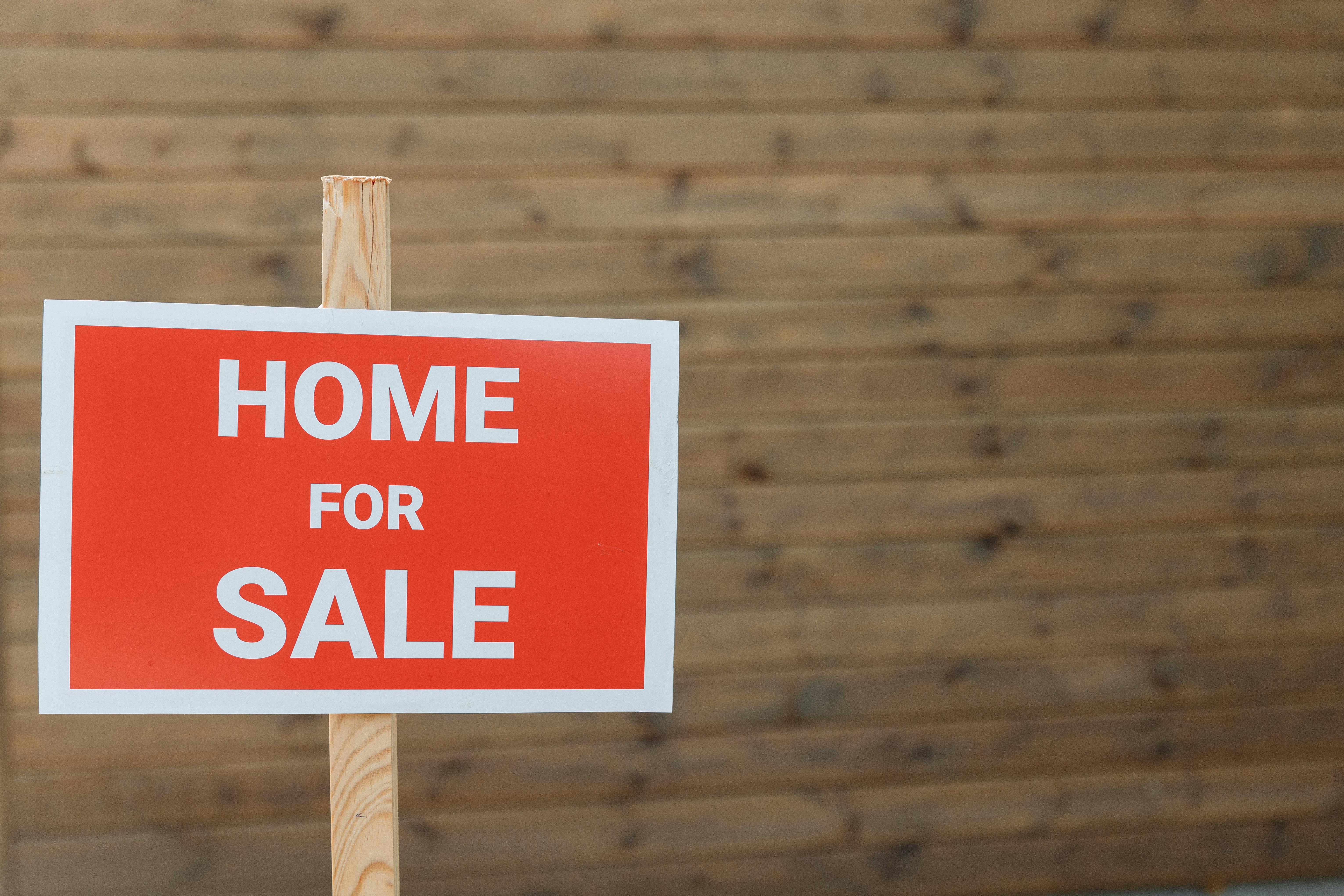March 2025 Real Estate Newsletter
Welcome to Your Real Estate Update!
Greetings, homeowners and prospective sellers! As we move through the first quarter of 2025, the real estate market continues to evolve, presenting both challenges and opportunities. If you’re wondering why your home might be taking longer to sell than expected, or curious about what the future holds for the housing market, this newsletter is for you. We’ll break down the current national trends and explain how these trends compare and effect our local market. We will also explain the factors affecting selling times, provide fact-based predictions, and share actionable steps you can take now to prepare for a market rebound. Let’s dive in!

Why Is My Home Taking Longer to Sell?
If your home has been on the market for a while, you’re not alone. Nationally, homes are currently taking an average of 56 days to sell—the longest span in five years. Unfortunately, days on the market in the lake area are averaging closer to 120-160 days. This shift is a stark contrast to the frenetic pace of 2020-2022, when homes often sold in days. Here’s what’s driving this change:
- Higher Inventory Levels
Housing inventory is growing, giving buyers more options. As of early 2025, the national supply of unsold existing homes has increased by 16.8% compared to last year, reaching approximately 1.18 million units. While this is still below the balanced market threshold of 5-6 months’ supply (we’re at about 3.5 months), it’s enough to ease the intense competition we saw in prior years. In Savannah Lakes Village, existing home inventory grew by 49.2% (from 29 units to 59). More choices mean buyers can take their time, and your home may need to stand out more to catch their eye. - Affordability Challenges
Despite a slight dip in mortgage rates—down to an average of 6.65% for a 30-year fixed mortgage as of March—high home prices continue to strain buyer budgets. The median existing-home sale price hit $396,900 in January 2025, a 4.8% increase year-over-year. Savannah Lakes Village saw an even higher existing-home sales price of $566,000. For many, this creates a gap between what they can afford and what’s available, leading to longer decision-making processes. - Shifting Buyer Expectations
Buyers are gaining negotiating power. Homes in our area are now selling for 10.7% less than their asking price on average—the largest discount in two years. This suggests that overpricing can significantly extend your time on the market. Buyers are also pickier, often waiting for homes that meet their exact needs rather than settling in a rush. - The ‘Lock-In Effect’ Is Easing—But Slowly
Many homeowners with low mortgage rates (below 6%) have been reluctant to sell, keeping inventory tight. However, life events—job changes, growing families, or tapping into equity—are starting to loosen this grip. While this is increasing listings, it’s not yet flooding the market, so the balance remains delicate.
What This Means for You: Your home’s selling time depends heavily on pricing it competitively, staging it well, and targeting the right buyers. Patience may be key, but strategic adjustments can make a big difference.

Future Market Predictions for 2025 and Beyond
Looking ahead, here’s what experts anticipate for the real estate market, backed by data and trends:
- Prediction: Home Prices Will Grow Modestly (2-3% in 2025)
- Supporting Fact: The National Association of Realtors (NAR) forecasts a 2% increase in median home prices for 2025, with another 2% in 2026. This moderation reflects growing inventory and softening demand due to affordability constraints.
- Why It Matters: If you’re selling, you can still expect appreciation, but the days of double-digit gains are likely behind us. Pricing realistically now could help you sell faster than waiting for a bigger jump that may not come.
- Prediction: Mortgage Rates Will Decline Slightly (Low-to-Mid 6% Range by Year-End)
- Supporting Fact: Fannie Mae and the Mortgage Bankers Association (MBA) predict rates will settle between 5.9% and 6.1% by Q4 2025, potentially dipping to 5.8% by year-end. This follows the Federal Reserve’s steady stance on the federal funds rate (4.25%-4.5%) and cooling inflation (2.8% year-over-year in February).
- Why It Matters: Lower rates could bring more buyers into the market, potentially reducing your home’s time on the market later in 2025. If you’re flexible, listing in the spring (April-May) might capitalize on this uptick in demand.
- Prediction: Inventory Will Continue to Rise, but Not Enough to Flip to a Buyer’s Market
- Supporting Fact: New construction is picking up, with 41,347 new housing units authorized in Georgia alone in July 2025, per the Building Permits Survey. Nationally, single-family starts are expected to grow by 0.2% to 1.01 million units in 2025 (NAHB). However, the U.S. still faces a 3.8 million unit shortage, meaning supply won’t fully meet demand soon.
- Why It Matters: More homes on the market will give buyers options, but persistent shortages mean sellers won’t lose all their edge. Staging and marketing will remain critical to stand out.
- Prediction: No Crash, but a Balanced Market by 2026
- Supporting Fact: Lending standards are stricter than pre-2008, and homeowners have significant equity (86% of mortgaged homes are below 6% rates). Foreclosure activity is down 10% from 2024, with only 322,103 cases last year. Experts agree a crash is unlikely.
- Why It Matters: You can sell with confidence that the market won’t collapse, but waiting too long might mean facing stiffer competition as inventory grows.

Actions You Can Take Now to Prepare for a Market Rebound
While the market is cooling slightly, a rebound in buyer activity is expected as rates ease and confidence grows later in 2025. Here are steps you can take now to position your home for success when conditions improve:
- Tackle Small Repairs and Updates
- Fix leaky faucets, replace outdated light fixtures, or refresh worn flooring. These low-cost improvements (often under $1,000) can boost your home’s appeal. Homes with modern finishes sell 15% faster, per a 2024 Zillow study. Start now to avoid rushing later.
- Enhance Energy Efficiency
- Upgrade insulation, install a smart thermostat, or add energy-efficient windows. With energy costs rising (up 4.3% year-over-year), buyers are prioritizing efficiency. These upgrades could increase your home’s value by 3-5%, according to the NAR, and make it more attractive when demand picks up.
- Plan a Kitchen or Bath Refresh
- You don’t need a full remodel—think new countertops, a fresh coat of paint, or updated hardware. Kitchens and bathrooms drive buyer interest, and a minor refresh (costing $2,000-$5,000) can yield a 70% return on investment when you sell, per Remodeling Magazine’s 2025 Cost vs. Value Report.
- Boost Curb Appeal Now
- Spring is prime selling season, so start outdoor projects early. Trim overgrown shrubs, power-wash siding, or repaint the front door. Homes with strong curb appeal sell for 7% more on average, per the University of Alabama. Get ahead of the game before the market heats up.
- Gather Documentation
- Compile records of recent upgrades, warranties, or permits. Having this ready shows buyers your home is well-maintained, which can speed up offers when buyer interest surges. Organized sellers close deals 10 days faster, according to Redfin.
- Monitor Local Trends
- Work with an agent to track your neighborhood’s market. Are homes selling faster or slower? Are prices holding steady? Knowing this now lets you time your listing for peak demand—likely late spring or early summer 2025 based on current forecasts.
Pro Tip: Start with one or two projects now. Incremental improvements spread out over months will feel less overwhelming and keep your home ready for a quick listing when the market rebounds.

Tips for Sellers in Today’s Market
- Price Right: Work with an agent to set a competitive price based on recent local sales. Overpricing is a common reason homes linger.
- Boost Curb Appeal: Spring is coming—fresh landscaping and minor updates can make your home more inviting.
- Be Flexible: Consider offering concessions (e.g., covering closing costs) to attract buyers in a market where they’re negotiating harder.
- Time It Well: Listings in early April 2025 could fetch up to $27,000 more on average, per Realtor.com, as buyer activity peaks.

Looking Ahead

The 2025 housing market is shaping up to be a year of transition—less frantic than the pandemic boom, but not a bust either. For sellers, understanding why your home takes time to sell (inventory, pricing, buyer hesitancy) and preparing for a balanced market will be key to success. By taking action now, you’ll be primed to capitalize on a rebound when buyer demand strengthens later this year. Whether you’re ready to list now or planning for later, staying informed and proactive will help you navigate these changes.
Have questions about your specific situation? Reach out—I’d love to assist you in making the most of this market!
Warm regards,
Tom Greene
Greene Advantage Real Estate & Development
706-318-9495
Note: Data is sourced from industry reports by NAR, Fannie Mae, Zillow, Realtors of Greater Augusta and other reputable organizations, reflecting trends as of March 30, 2025.


